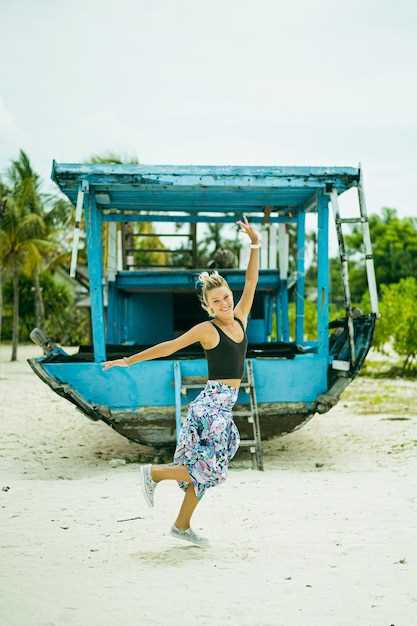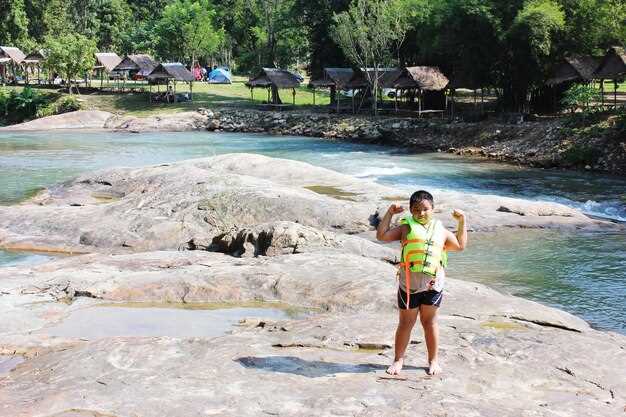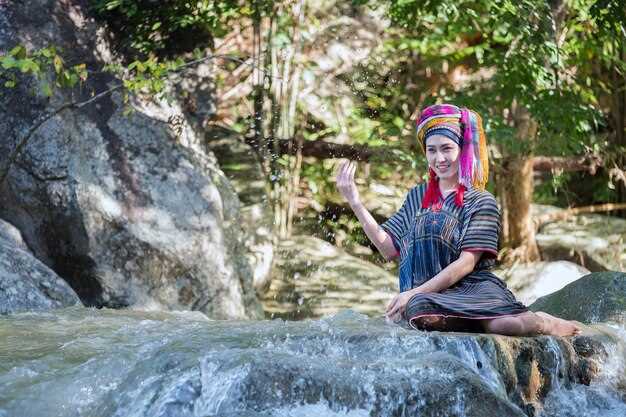
Rent bicycles at dawn and ride around the Mekong rim to maximize time on Don Det and Don Khon. The drive from Pakse to the 4000 Islands took about six to seven hours with a reliable driver, weaving through bolaven plantations and rice fields where water glints in the morning light.
The following routine fits most visitors: rent bicycles, ride along the palm-lined lanes, and choose a riverside camp with a hammock to unwind by the water. In Don Det, mark your day with a morning ride, a quiet afternoon on the river, and a sunset stroll to the bridge; the daily rhythm of stalls and locals keeps things real. If you want a deeper view, a driver can shuttle you to Khone Phapheng Falls in about 40 minutes by boat, with stops to photograph birds and Khmer markets.
Two ways to cover the corridor exist: on your own bike or with a local driver for a relaxed pace. Cross the river to Don Khon and follow the old rail track for sunset views; the bridge is a relic of colonial days and a popular photo spot. Expect time on bikes to vary with wind; use the river breeze to push you along. The village lanes allow you to meet locals who cook rice and coconut snacks, with daily markets offering textiles and carved trinkets.
Where to stay: choose guesthouses near the Don Det–Don Khon bridge; the largest cluster sits along the river, with hammocks, balconies, and simple fans. further options include a riverside camp with reliable water pressure and updated bathrooms, and a short walk to a night market. Reserve daily rates at least a week ahead during peak season; in dry months from November to February, humidity drops and conditions stay comfortable. Book before the crowds arrive and pack light layers, a fast charger for your phone, and a spare SD card for river scenery.
Daily tips include arriving early to catch cooler mornings, keeping sunscreen handy, and respecting local customs; you will find friendly people, straightforward trails, and plenty of shade along the riverbanks.
Laos Travel Planning
Begin by booking private riverside stays on Don Det or Don Khon six weeks ahead to secure quiet space, private rooms, and convenient access to the riverside. This keeps outside noise low and helps focusing on authentic village life along the Mekong in Asia, turning travel moments into a beautiful memory.
- Base choices: Don Det offers a social, budget-friendly vibe with simple guesthouses and riverfront terraces; Don Khon tends toward private villas and a calmer rhythm. Look for accommodations that include bike rental and a riverside breakfast; if you request a quieter space, most hosts will accommodate. Crossing the old rail bridge on foot lets you move between the two islands.
- Getting around: rent a bicycle for easy loop rides; the means of river hops include private boats or long-tail transfers; for a full day, hire a local guide to share context about the 4000 Islands and the khone area without losing flexibility.
- Food and meals: along the riverside you’ll find restaurants serving Lao, Thai, and Western options. Expect meals in the 25k–60k kip range; request a private cook or a riverside meal to elevate the authentic experience. Try a traditional Lao meal with sticky rice and freshly caught fish from nearby waters.
- Sights and experiences: plan a morning visit to the khone area and Khone Falls; enjoy a sunset stroll along the river and watch boats drift by. For a unique touch, arrange a private meal on nakasong and share stories with locals over a quiet river view.
- Planning levels (levels):
- Level 1 – Easy days: short bike loops around Don Det and Don Khon, a riverside swim, and a sunset drink near the bridge.
- Level 2 – Moderate days: longer bike ride toward the khone side, a visit to the falls, and a boat trip to nakasong for a riverside meal.
- Level 3 – Active days: a private boat to hidden coves, a calm kayak along the mangroves, and a night market stroll with locals, with playing along the riverbank and a shared meal to cap the day.
How to book a Pakse-to-Bolaven day trip: private driver, scooter, or guided tour
Recommendation: Hire a private driver from Pakse for a Bolaven day trip to maximize flexibility and comfort. This option lets you tailor stops at hidden farms, quaint villages, and scenic shores, including Somphamit farms and the Vihear view. Pakse is located near the Mekong in southern Laos, and a driver lets you customize the heading to your interests. For a first-time traveler, arranging a driver through a reputable agency or your hotel yields smooth travel with tips on timing and routes already built in. Both options suit different travel styles, but a private driver offers the easiest balance of planning and spontaneity.
What you get with a private driver: a dedicated vehicle, a flexible schedule, and the ability to adjust the day at any moment. Typical day trips cover multiple stages–a morning start heading toward the Bolaven plateau, stops at waterfalls like Tad Lo or Tad Fane, a lunch break at a nearby restaurant, and a return by sunset. You can ask the driver to include a visit to a village for a quick walk and a peek at local farms or a coffee plantation along the shore. Prices vary by distance and vehicle size; expect roughly 60–120 USD for the driver and vehicle for the day, with fuel and parking included. If you stayed in Pakse overnight, you can combine a Bolaven loop with a city stroll before heading out.
Scooter option: if you’re confident on two wheels, a self-guided scooter day gives you the most control and a lighter footprint. Hire a scooter in Pakse and map a route to the hidden gems around the plateau. Always wear a helmet, check brakes, and carry a map or offline GPS. A scooter day typically costs 10–20 USD for rental plus fuel, with a recommended max distance of 90–120 km to avoid fatigue. Include stops at a quaint village, a scenic view, and a final coffee at a local restaurant to reset before heading back. If you plan to paddle a river near Tad Xai or the shore, check the local weather and water levels for safety.
Guided tour: a small-group or private guided tour handles transport, entrance notes, and language for you. Guides can arrange visits to farms, a village, and Vihear site while sharing local knowledge about what makes Bolaven special in a given season. Tours often include lunch at a travel-friendly restaurant and visits to a few hidden viewpoints. Expect 40–70 USD per person for a half-day group tour, more for a private guide, with a set itinerary that covers farms, villages, and final stops at a viewpoint before returning to Pakse.
Booking tips: start by confirming the date, start time around 7:30–8:30, and a pickup place in Pakse. Share your preferred villages and what you want to see–coffee farms, a river shore, a view–so the operator can plan the route in stages. If you’re arriving by train or bus, arrange pickup at the station or terminal to avoid backtracking. Note any entrance fees or extra items, and ask if meals are included. Pack light items to avoid extra baggage, and bring cash for entrance fees or tips. Keep notes on the items you want to visit, such as a hidden village, a famous restaurant, or a final photo stop with a beautiful view.
Practical notes: verify the vehicle’s condition, the driver’s license, and the cancellation policy. Some operators offer a combined package with multiple stops, which can be a good value if you want to sample several farms or villages. If you stayed near Pakse Old Town, you’ll find a handful of operators with English-speaking guides–use one of them to avoid miscommunication and to access local recommendations about where to eat and visit. This approach helps you have a coherent plan that covers what you want to see and where to eat along the way, with a final stop that delivers a beautiful sunset if the weather cooperates.
Bolaven Plateau highlights: Tad Fane vs Tad Lo waterfalls – which to visit in a day
Do Tad Fane first, Tad Lo second, and plan a 6–7 hour loop from pakse-, the route covers about 60km into southern Laos, and hiring a driver makes the transfer between sights simple.
Tad Fane rises with dramatic twin cascades and basalt columns; the light there is very good in the morning, so visiting on the front half of the day yields the best photos. The overlook gives a clear view of the wide drop, and there are a few terraces where you can pause for a coffee and to admire the scale.
Tad Lo offers a very different mood: shaded terraces, calmer pools, and a riverside stroll to a wooden bridge. It’s ideal for lunch and you can sample local dishes and other food from nearby cafes. If you want a relaxed break, Tad Lo’s vibe invites you to linger; some visitors sip champy while watching the water from the terraces, and there are viewpoints where you can catch a clear view of the falls from the bridge.
Practical tips: you can book a driver or join tours, and you may request a flexible schedule to fit your pace. Tad Fane has a simple ticket for the viewing area, while Tad Lo is typically free to access along the terrace routes. Some operators offer a day package with a transfer between the sites, and a few stops on the way to learn about local farms and coffee farms that dot the country’s countryside. You’ll pass thousands of farms located along the road, many covered in coffee bushes and pepper plots. The 60km drive is a compact journey you can complete in a single day, and the drive took about 1.5–2 hours each way, bringing you from pakse- into a cooler front, then back home or on to the next destination.
Coffee farm route: where to stop for fresh beans and a quick tour

Depart Don Det at first light and ride flat roads along the Mekong toward Ban Nakasang; this three-stop coffee route fits into a very doable half-day and delivers fresh beans you can roast at home daily.
Stop 1, the first farm, sits a short 15–20 minute ride from the ferry pier. Here you can join a quick tour of the drying beds, watch a loom of beans on the drying rack, and sample a cup right at the source. The farmers, a Lao-French family, run the display with pride, and you’ll find thousands of beans drying under the sun, with prices posted in kip and, at times, yuang.
Stop 2, before Don Khon’s shore, is a small cooperative that handles washing, drying, and light roasting on a flat wooden deck. You’ll observe the full process from pulping to sun-drying, then taste three profiles–natural, washed, and honey–so you can compare aroma, acidity, and body. Most daily batches arrive here, so you can watch the rhythm of production and ask questions on technique.
Stop 3 sits by the village’s riverside cafés, where Khmer signage and a hint of Khmer culture appear in the buildings’ details. Signs draw on banteay and preah motifs, reminding you you’re near Khmer-speaking communities. Children playing nearby, you sipping a cup with a perfect view of the shore, and then a last stop to buy beans to take home; you depart with a smile and a plan to roast when you get back.
Overall, the route is a paradise for coffee lovers: it links three simple farms along a gentle arc between two islands, with friendly hosts, informative tours, and the chance to see how a daily harvest becomes your next morning cup. If you arrive on the far side of the river, you’ll see the irrawaddy calm of the Mekong as you circle back to Don Det and Don Khon, and you’ll know this road was worth the ride.
Practical packing list for a Bolaven day trip (water, rain gear, camera)
Pack a light daypack with a waterproof dry bag for electronics and a snug water bottle to keep you moving from dawn to late afternoon.
Hydration matters on the Bolaven highlands day trip; plan to carry about 2 liters per person, plus a portable electrolyte option for hot sections along the road.
Carry a packable rain jacket or poncho and a compact umbrella; for the camera, use a covered rain cover or a dry bag to keep gear safe when you cross streams or walk near rapids.
Keep a spare battery, a small memory card, microfiber cloth, and a lightweight tripod or handheld stabilizer; keep the camera inside a covered compartment when you ride in open transport.
Dress in light layers suitable for highlands: breathable t‑shirts, a light fleece for cool mornings, sturdy walking shoes, and socks that dry quickly. Pack a hat and sunglasses for sun at the pier and open sections.
Pack compact snacks: nuts, dried fruit, energy bars, and a small dinner option if you plan a long stop at a scenic view; avoid heavy meals that slow you down; there are neat, quaint places to eat along the route.
First aid basics, insect repellent, sunscreen, and a personal medical kit; keep a wet wipe for hands and a small towel for river stops at rapids or when visiting temples or coffee farms.
Waterproof phone case, dry bag for wallet, small towel, and a light blanket for the last stretch before sunset; if you plan to visit islands or a riverside village, leave valuables in the covered section of your bag.
Discuss transport options with your host or guide; if you stay in a homestay, you can pack lighter and keep a set of spare clothes in the vehicle; for a camp setup, bring a compact towel and a foldable mat.
If your itinerary also includes cambodia and a stay near angkor, carry a versatile bag that can switch between a day trip in Laos and an extended expedition in Southeast Asia.
The Bolaven circuit covers roughly 60km of winding roads between coffee farms and waterfalls, so distribute gear to avoid fatigue and allow quick access to water and rain gear.
With these items, you stay flexible for a half‑day that mixes light walks, cedar coffee stops, and a beautiful river stretch, while you keep your gear safe and ready for photos along the way.
Plan your return to Pakse: optimal timing to catch dinner or onward transport

Return there before dusk by taking the Don Det/Don Khon ferry to Ban Nakasang around 15:30–16:00, then hire a driver or a shared minivan for Pakse. This window puts you in Pakse by 19:30–20:00, leaving enough time for a dinner on a Mekong terrace.
From Ban Nakasang dock, the road to Pakse runs roughly 3h30m–4h15m under normal conditions; the driver may stop at 2–3 sites along the way. Near the Don Khong area you may spot a strangler fig by the jungle that makes a very photogenic pause for visiting couples, adding a moment of jungle calm to the drive.
In Pakse, pick a riverside restaurant near the square with a terrace that faces the Mekong. There you’ll find very good Lao and Thai options, and you can watch the sunset over long water views–paradise after a day on the water.
For onward transport, book a service that leaves between 20:00 and 22:00 if you plan to connect to a future point. The driver can arrange a border stop if you’re heading toward Siem Reap routes, and there are sites along the way to break the trip with a quick visit. They offer you guaranteed seats when you reserve ahead, which is handy for a smooth next step.
Tips: if you’re traveling as a couple, there’s much to gain from a relaxed pace; there are bicycles for a quick loop near Ban Nakasang if you want a short break, and many restaurants near the river feature outdoor spaces with a homey feel where you can linger before the long drive back to Pakse.
| Етап | What to do | Typical time | Notes |
|---|---|---|---|
| Ferry to Ban Nakasang | Cross from Don Det/Don Khon | 15–20 min | Plan to catch the 15:30–16:00 window; bicycles available for a quick reach to the dock |
| Ban Nakasang to Pakse | Shared minivan or private driver | 3h30m–4h15m | Stops at 2–3 sites; there is a border nearby if detouring toward Siem |
| Dinner in Pakse | Riverside terrace restaurants near the square | 19:00–21:00 | Very good sunset views; options span Lao, Thai, and fusion |
| Onward transport from Pakse | Book next service to target destination | 20:00–22:00 departures | Reserve in advance; border or Siem routes available; guaranteed seats when arranged ahead |
